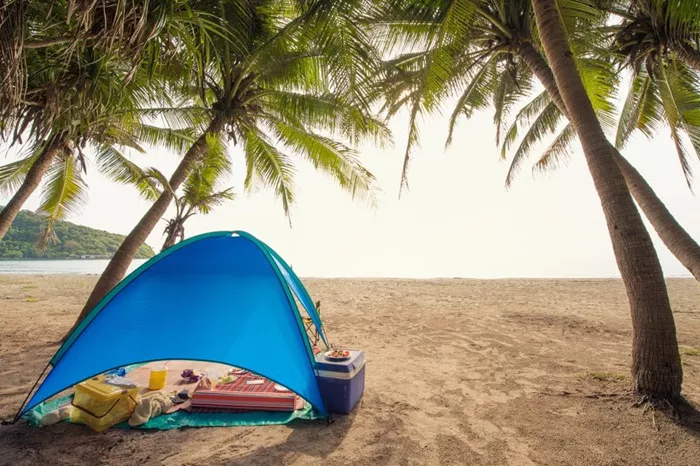A-frame tents are popular among outdoor enthusiasts for various reasons. Their unique design and structure make them suitable for different camping situations. In this article, we will explore when to use an A-frame tent, its advantages, disadvantages, and tips for setting it up.
What is an A-Frame Tent?
An A-frame tent is a simple, triangular structure that resembles the letter “A.” It has a steep roof and two slanted sides. This design allows for good rain and snow runoff, making it a reliable choice in wet conditions. The tent is typically made from lightweight materials, making it easy to carry.
Basic Features
Shape: The A-frame shape provides stability.
Materials: Common materials include nylon, polyester, and canvas.
Flooring: Many A-frame tents come with a built-in floor for extra protection.
Ventilation: Some models have vents to allow air circulation.
Advantages of A-Frame Tents
Easy Setup
One of the main advantages of an A-frame tent is its straightforward setup. Most A-frame tents come with a simple pole system. This allows campers to pitch the tent quickly, even in challenging conditions.
Good Weather Resistance
A-frame tents perform well in windy and rainy weather. The steep roof helps water runoff, reducing the risk of leaks. Additionally, the shape provides stability against strong winds.
Lightweight and Portable
A-frame tents are generally lightweight, making them easy to transport. This feature is beneficial for backpackers or hikers who need to carry their gear for long distances.
Versatile Use
These tents are versatile and can be used in various camping situations. Whether you’re camping in a forest, at a campground, or in the backcountry, an A-frame tent can suit your needs.
When to Use an A-Frame Tent
1. Backpacking Trips
A-frame tents are an excellent choice for backpacking. Their lightweight design makes them easy to carry on long hikes. You can find models that weigh as little as 3 pounds, allowing you to pack light without sacrificing comfort.
2. Rainy Conditions
If you anticipate rainy weather, an A-frame tent is a wise choice. The slanted sides prevent water from pooling on the roof, which can happen with flatter tents. Make sure to choose a tent with a waterproof rainfly for added protection.
3. Windy Environments
Camping in windy areas requires a sturdy shelter. The A-frame shape provides good wind resistance. Ensure that you stake down the tent properly to enhance its stability in gusty conditions.
4. Short Camping Trips
If you’re planning a quick camping trip, an A-frame tent is convenient. Its easy setup and takedown process save time. You can focus more on enjoying your time outdoors rather than struggling with complicated gear.
5. Camping with Kids
When camping with children, simplicity is key. A-frame tents are easy to set up, making it manageable for families. Kids can help pitch the tent, adding to the fun of camping.
6. Emergency Shelters
In a pinch, A-frame tents can serve as effective emergency shelters. Their quick setup and durable design make them suitable for unexpected situations. If you get caught in bad weather or need a place to sleep unexpectedly, an A-frame tent can provide shelter.
Disadvantages of A-Frame Tents
1. Limited Space
One downside to A-frame tents is their limited interior space. The slanted walls can make it challenging to stand up inside. If you’re tall or prefer a spacious tent, this may not be the best option for you.
2. Less Versatile in Extreme Weather
While A-frame tents handle rain and wind well, they may not be the best choice in extreme weather conditions. For heavy snowfall or extreme heat, other tent styles may provide better insulation or ventilation.
3. Setup Requires Some Practice
Although A-frame tents are generally easy to set up, they may require practice. Familiarizing yourself with the pole system and stakes beforehand can help ensure a smooth setup when you arrive at your camping site.
Tips for Using an A-Frame Tent
1. Choose the Right Location
When setting up your A-frame tent, look for a flat, dry area. Avoid low spots where water might collect if it rains. Additionally, try to pitch your tent away from strong winds or potential falling branches.
2. Use a Ground Tarp
Using a ground tarp can help protect the bottom of your tent from abrasions and moisture. It also adds an extra layer of insulation from the cold ground.
3. Practice Setting Up
Before your trip, practice setting up your tent at home. Familiarize yourself with the process, so you can do it quickly and efficiently in the field.
4. Check the Weather
Before heading out, check the weather forecast. Knowing the expected conditions can help you prepare. If severe weather is predicted, consider choosing a more robust shelter.
5. Ventilation is Key
Ensure that your A-frame tent has good ventilation to prevent condensation inside. Use any available vents or leave a small opening in the door if it’s safe to do so.
Conclusion
A-frame tents are a versatile option for many camping situations. Their lightweight design, ease of setup, and weather resistance make them an ideal choice for backpackers, families, and casual campers. While they do have some limitations, understanding when to use an A-frame tent can enhance your outdoor experience. By following the tips outlined in this article, you can make the most of your A-frame tent and enjoy your time in nature.
Related topics:
- Is the Coleman Sundome Tent Waterproof?
- What Does Camping Mean in Slang?
- Is Camping Safe? A Comprehensive Guide

